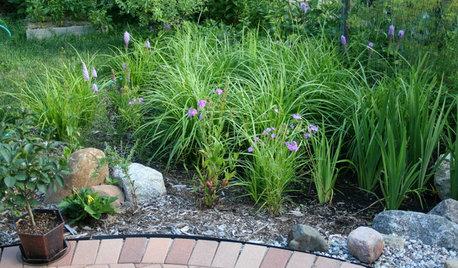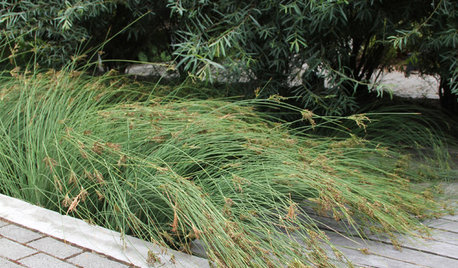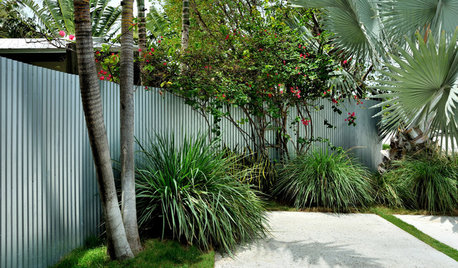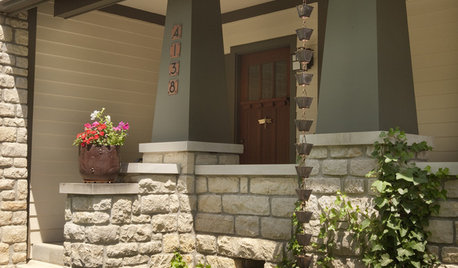Rain barrels to water fruit?
lsoh
10 years ago
Related Stories

GREEN BUILDINGJust Add Water: Rain Barrel Magic
Take your rainwater storage from practical to beautiful with a new breed of design-friendly rain barrels
Full Story
HOUZZ TVHouzz TV: How to Install a Rain Barrel
This DIY tutorial shows how easy it can be to capture rainwater from your roof to use in your garden later
Full Story
LANDSCAPE DESIGNHow to Site and Size a Rain Garden for Your Landscape
Installing a rain garden is an excellent way to reduce runoff and return water to its source
Full Story
GARDENING GUIDESProtect a Precious Resource With a Rain Garden
Promote pure water and a beautiful landscape with a garden design that makes the most of the rain
Full Story
MOST POPULARHow to Get Rid of Those Pesky Summer Fruit Flies
Learn what fruit flies are, how to prevent them and how to get rid of them in your home
Full Story
EDIBLE GARDENSHow to Grow 10 Favorite Fruit Trees at Home
Plant a mini orchard in fall, winter or early spring to enjoy fresh-off-the-tree fruit the following year
Full Story
FARM YOUR YARDIf You Have Room for Only One Fruit Tree ...
Juice up a small garden with one of these easier-care or worth-the-effort fruit trees for a mild climate
Full Story
GREEN BUILDINGHow to Harvest Rainwater for Your Garden
Conserve a vital resource and save money by collecting stormwater for irrigation in a barrel or tank
Full Story
MATERIALSHumble Corrugated Metal Brings Modern Style to the Garden
This sustainable material is not just for rooftops. See these ideas for using it for fences, beds and rain barrels in your yard
Full Story
GARDENING AND LANDSCAPINGDesign With Weather: Introduce a Rain Chain
Create something beautiful with the runoff from your roof
Full Story






fruitnut Z7 4500ft SW TX
drew51 SE MI Z5b/6a
Related Professionals
Glen Ellyn Landscape Architects & Landscape Designers · Horsham Landscape Architects & Landscape Designers · El Mirage Landscape Contractors · Elkridge Landscape Contractors · Fishers Landscape Contractors · Fort Hunt Landscape Contractors · Fort Myers Landscape Contractors · Fruit Heights Landscape Contractors · Hurricane Landscape Contractors · Mastic Beach Landscape Contractors · Methuen Landscape Contractors · Plainview Landscape Contractors · San Antonio Landscape Contractors · St. Louis Landscape Contractors · Silver Firs Landscape Contractorsdrew51 SE MI Z5b/6a
steve333_gw
Bradybb WA-Zone8
drew51 SE MI Z5b/6a
fabaceae_native
ramble
sf_rhino
lsohOriginal Author
steve333_gw
skyjs
steve333_gw
sf_rhino
patapscomike
Charlie